
Marisan Tumuli
Marisan Tumuli
- Tomb construction took place at this cemetery over the longest period of time among the seven nominated sites.
- Over this extended period, wooden coffin burials and wooden chamber burials without a large burial mound were first constructed, and then stone-lined chambers and corridor-chambers were built and topped by a large mound. The Marisan Tumuli offers a clear illustration of the lengthy process of a hilly cemetery being formed into an unmistakable local signifier of power.
General Information
- Designation: Historic Site No.515
- Construction period: 1st-6th centuries
- Property area: 40.28ha
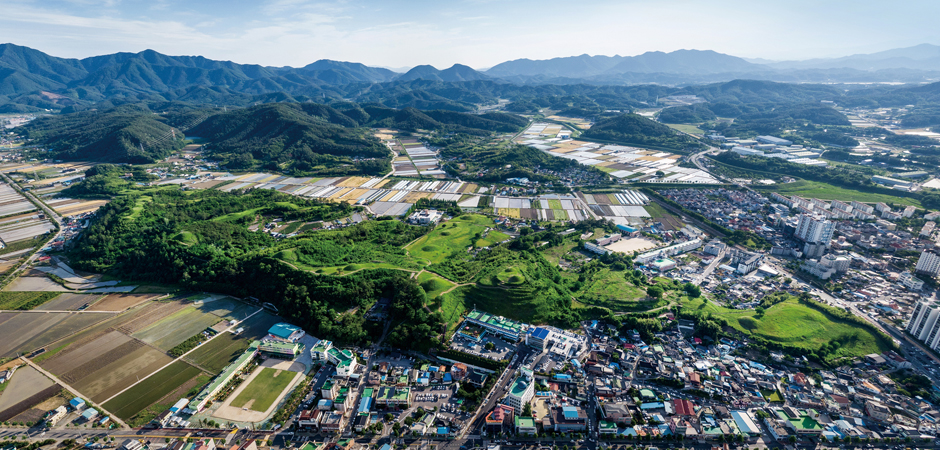
- overview
- The clusters of tombs constructed on a hill called Mt. Marisan in Haman County, Gyeongsangnam-do Province are together known as the Marisan Tumuli. The political leaders of Aragaya were buried here from the first through the mid-sixth century. Tomb construction took place at this cemetery over the longest period of time among the seven nominated sites. Over this extended period, wooden coffin burials and wooden chamber burials without a large burial mound were first constructed, and then stone-lined chambers and corridor-chambers were built and topped by a large mound. The Marisan Tumuli offers a clear illustration of the lengthy process of a hilly cemetery being formed into an unmistakable local signifier of power.
With imposing high-mounded tombs on its top, the Marisan cemetery was perceived as a sacred place long after the demise of the Gaya civilization. A 16th-century document identifies the Marisan Tumuli as a tomb cluster for ancient kings. Thanks to the respect for the Marisan Tumuli, the mounded tombs remained well preserved.
In the northeastern section of the buffer zone are found the Haman County Office, constructed in 1954, and other public buildings. The hilly cemetery has farmland to its west and south, while urbanization has taken place to its east and north.
Field surveys and archaeological excavations were performed in the early 20th century at the Marisan Tumuli. Based on the findings, the cemetery was placed on the Japanese colonial list of Historic Places. The cemetery was actually designated as two separate Historic Places—the Dohang-ri Tumuli and Malsan-ri Tumuli—based on the administrative boundaries of the era. The two colonial Historic Places were redesignated as Historic Sites in 1963 under the Cultural Heritage Protection Act.
There are 127 mounded tombs on the slopes and ridges that date to the fifth and sixth centuries. Stone-lined chambers at the Marisan Tumuli were constructed from the fifth century onward, and prominently display the distinctive elongated shape of a Gaya-type stone-lined chamber. The tomb occupant is placed in the middle of the elongated stone-lined chamber, a large amount of pottery is placed in the area extending from the head, and the bodies of human sacrifices were interred in the area stretching below the feet. This manner is distinctive to Aragaya.
Excavations at the Marisan Tumuli that have been carried out since the early 20th century have revealed large quantities of burial objects, including pottery, iron weapons, and trade goods. Along with the shared types of Gaya pottery appearing all across the nominated cemeteries—the footed bowl, jar pedestal, and long-necked jar—the Marisan Tumuli has also yielded unique local pottery variations. One example is items perforated to create a flame motif. Figurative pottery in the form of a house, wheel, deer, and ship have been also found in this cemetery.
Based in the Nakdonggang River basin, Aragaya persisted across the entire span of Gaya history. Its economy drew on trade with other Gaya polities and neighboring states via the Nakdonggang River and its tributaries.
Picture
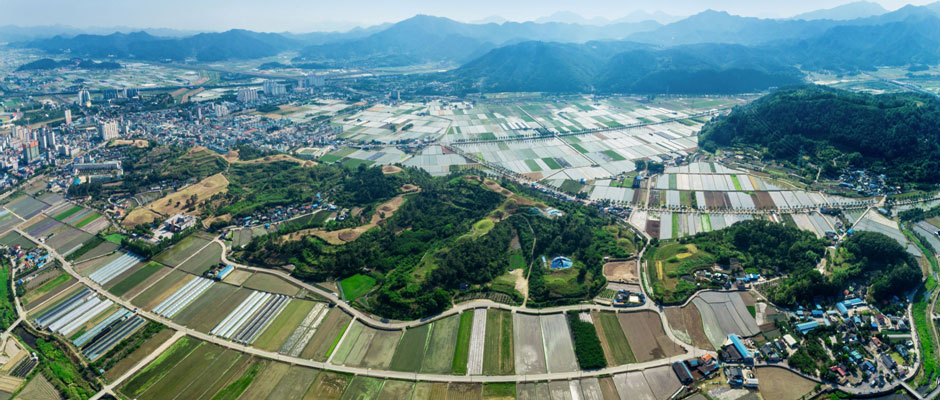
Picture1. View of Marisan Tumuli, Haman
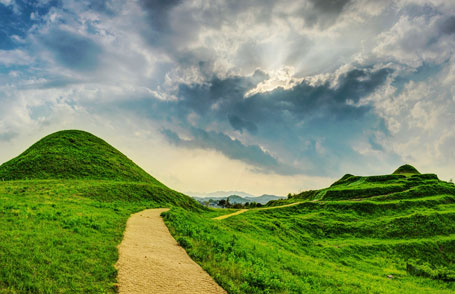
Picture2. Picture of Marisan Tumuli, Haman
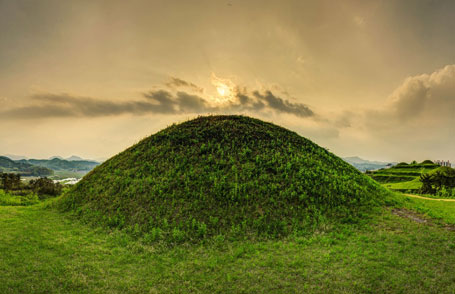
Picture3 view of Marisan Tumuli, Haman
Relics
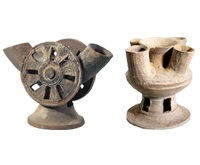
Tomb no. 4 Wheel Wagon-shaped earthen pots / Tomb no. 39 OilLamp-shaped earthen pot
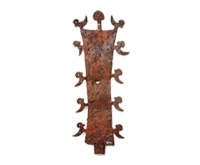
Tomb no. 13 Bird-shaped adornment Scrap Iron
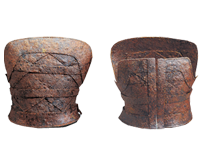
Tomb no. 13 Armored Clothes Front / Tombno. 13 Armored Clothes Behind
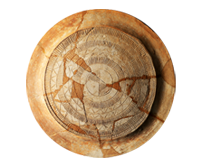
Design of the Lid
